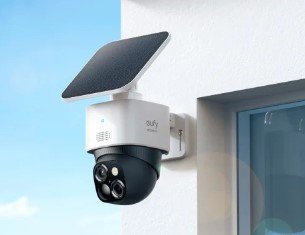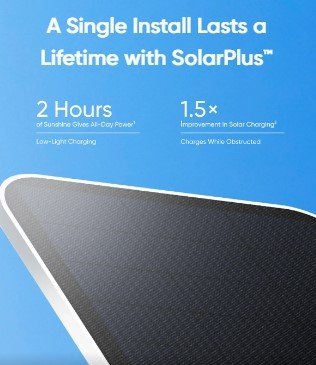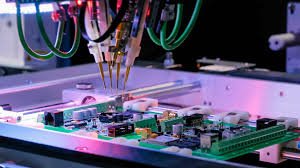
How to Optimize Solar Security Camera Performance
Solar security cameras have emerged as a significant advancement in home surveillance, combining eco-friendliness with robust functionality. By harnessing solar energy, these devices eliminate the reliance on traditional power sources, offering a sustainable and off-grid solution for security monitoring. To ensure these cameras deliver optimal performance, especially under varying environmental conditions, it is crucial to implement effective optimization strategies. This article will provide an in-depth examination of various techniques to enhance the performance of the solar powered security camera, thereby ensuring reliable and uninterrupted surveillance for residential properties.
Strategic Placement for Maximum Sunlight Exposure
Choosing the Best Location for Solar Panels
The strategic placement of solar panels is vital for maximizing the efficiency of solar security cameras. Optimal positioning should prioritize areas with maximum sunlight exposure throughout the day. Factors influencing this decision include the presence of obstructions such as trees, buildings, and other structures that may cast shadows over the solar panel, thereby reducing its energy absorption capacity. When selecting a location, it is essential to assess the surrounding landscape at different times of the day to identify potential obstructions. Ideally, the solar panel should be situated in a south-facing direction in the Northern Hemisphere (or north-facing in the Southern Hemisphere) to capture the most sunlight, particularly during peak sun hours.
Adjusting the Angle of the Solar Panel
The angle at which the solar panel is installed can significantly affect its energy absorption efficiency. The optimal tilt angle is contingent upon geographic location and seasonal sun patterns. A general guideline suggests an angle of approximately 30 to 45 degrees for most regions, but this may need to be adjusted according to seasonal variations. During summer months, when the sun is high in the sky, a lower tilt may be effective. Conversely, in winter, a higher angle may capture more sunlight as the sun’s trajectory changes. Regularly assessing the angle of the solar panel based on these seasonal shifts can substantially enhance energy collection and, consequently, the overall performance of the solar security camera.
Battery Optimization for Continuous Operation
Monitoring Battery Health and Capacity
Regularly monitoring battery health and capacity is crucial for ensuring the uninterrupted operation of solar security cameras. Most solar cameras come equipped with battery monitoring features that provide real-time updates on battery status. Maintaining an adequate battery charge is particularly important during low sunlight or inclement weather. Users should routinely check the battery performance logs available through the associated mobile application or device interface to identify potential issues early. If the battery drains faster than expected, it may indicate that the solar panel isn’t receiving enough sunlight due to obstructions or improper angle. In such cases, reevaluating the installation location and adjusting the solar panel can help resolve the issue.
Managing Power Consumption with Camera Settings
Optimizing camera settings can significantly reduce power consumption and extend the operational duration of solar security cameras. Key settings to consider include motion detection sensitivity, recording duration, and frame rate. For instance, adjusting motion detection sensitivity can prevent the camera from recording unnecessary movements, thereby conserving energy. Furthermore, reducing the recording duration for non-critical events can extend battery life. Many modern solar cameras, such as the SoloCam S340, feature power-saving modes that activate during nighttime or periods of low activity, optimizing energy use without compromising security.

Regular Maintenance for Peak Performance
The efficiency of solar panels can be adversely affected by the accumulation of dirt, dust, and debris. Therefore, regular maintenance is essential to ensure optimal sunlight absorption. Users should clean the solar panel and camera lenses periodically using a soft cloth or a mild detergent solution to prevent performance degradation. In addition to regular cleaning, it is crucial to inspect the camera and solar panel for any signs of weather-related damage. Extreme weather conditions, including heavy rain, snow, and strong winds, can pose risks to the durability and functionality of the camera. Implementing protective measures, such as mounting the camera and solar panel in sheltered areas or using protective casings, can mitigate potential damage.
Enhancing Connectivity and Data Management
Ensuring Strong Wi-Fi or 4G Signal
A robust internet connection is integral to the effective operation of solar security cameras. Weak Wi-Fi or 4G signals can result in suboptimal video quality, delayed notifications, and overall diminished performance. Therefore, positioning the camera in an area that ensures a strong and stable connection is paramount for maintaining effective surveillance. To enhance connectivity, users may need to reposition the camera closer to their home’s router or employ Wi-Fi extenders to boost signal strength. Some solar cameras from eufy also allow for the integration of 4G LTE connectivity as a backup, ensuring that the camera remains operational even if the primary internet connection fails.
Managing Cloud and Local Storage Efficiently
Efficient data management is crucial for maximizing the storage capabilities of solar security cameras. Adjusting recording settings, such as enabling motion-activated recording, can optimize storage use by ensuring that footage is only recorded when necessary. Regularly reviewing and clearing stored footage is also essential to prevent running out of space. Many security cameras, including the eufy SoloCam S340, offer both cloud and local storage options, providing users with flexibility in data management. The use of cloud storage can serve as a reliable backup for important footage, while local storage can facilitate quicker access to recorded events.
Seasonal Adjustments for Year-Round Efficiency
Adapting to Changing Weather Conditions
Adapting camera and solar panel settings according to seasonal changes is essential for optimizing performance throughout the year. For example, during winter months, when daylight hours are shorter, users may need to increase motion sensitivity settings to ensure that the camera captures all relevant movements, particularly during low-light conditions. Implementing these seasonal adjustments can enhance the overall reliability of the security system, ensuring that it remains effective year-round.
Monitoring Performance During Low Sunlight Seasons
Tracking the performance of solar security cameras during periods of low sunlight is crucial for ensuring continuous operation. Users should keep an eye on battery levels and energy consumption, particularly during winter months when sunlight is limited. If the camera shows signs of struggling to maintain a charge, consider additional measures, such as repositioning the solar panel to a sunnier location or adjusting recording settings to conserve energy. Proactive management during these seasons will help ensure that your security system remains functional and reliable.
Conclusion
In conclusion, optimizing the performance of solar security cameras requires a comprehensive approach encompassing strategic placement, battery management, regular maintenance, and effective connectivity. By focusing on these critical areas, users can significantly enhance the reliability of their solar security systems, ensuring they provide continuous protection for their properties. Staying proactive with adjustments and monitoring will not only maximize the efficiency of solar security cameras but also provide the peace of mind that comes with knowing your home is under vigilant surveillance.




